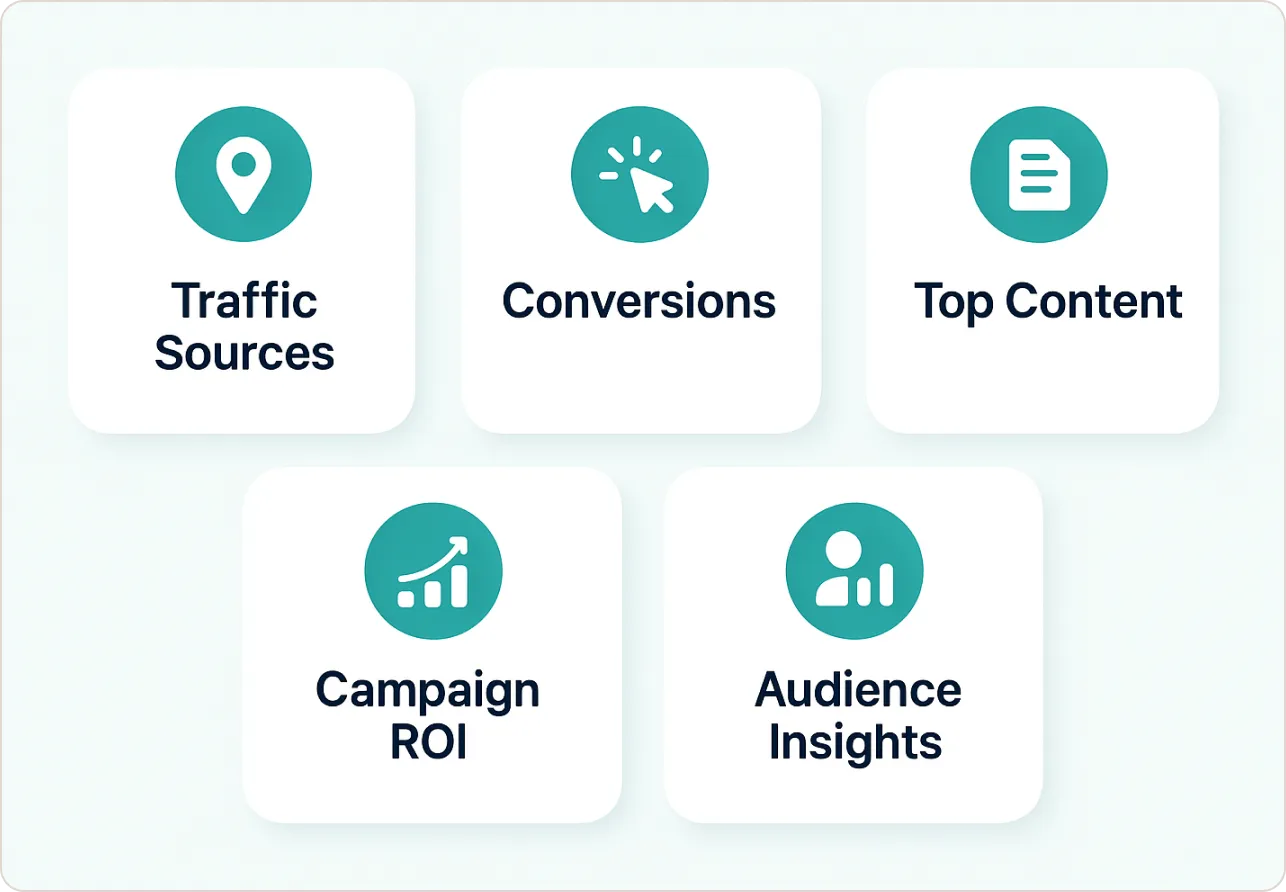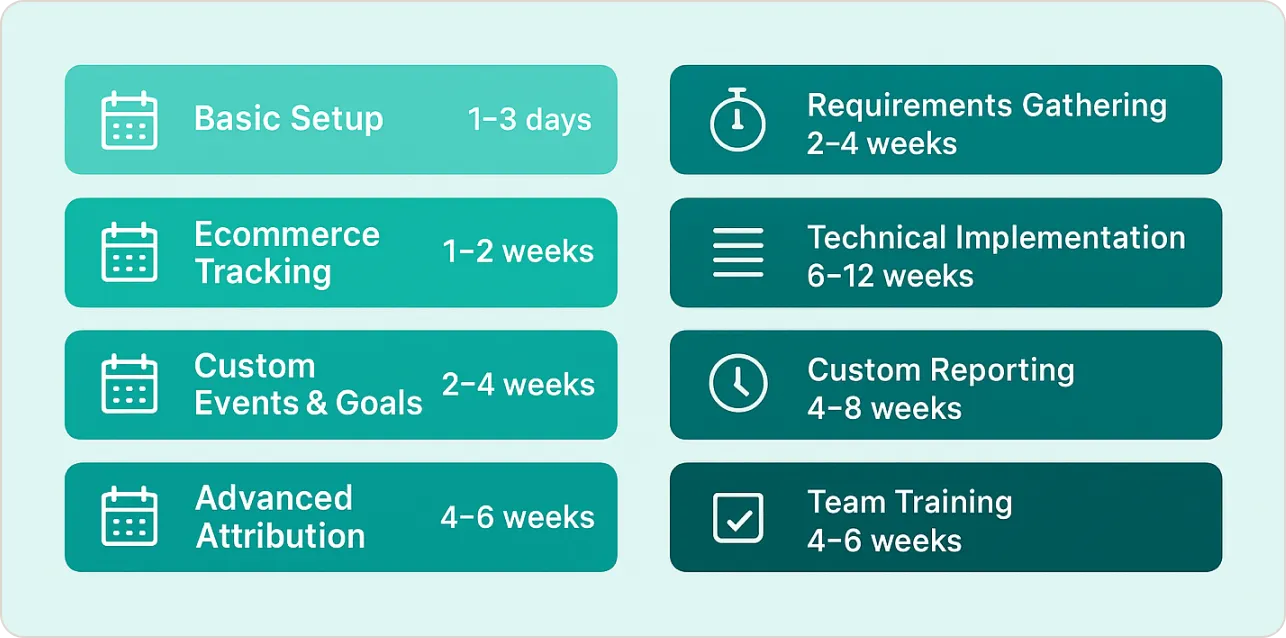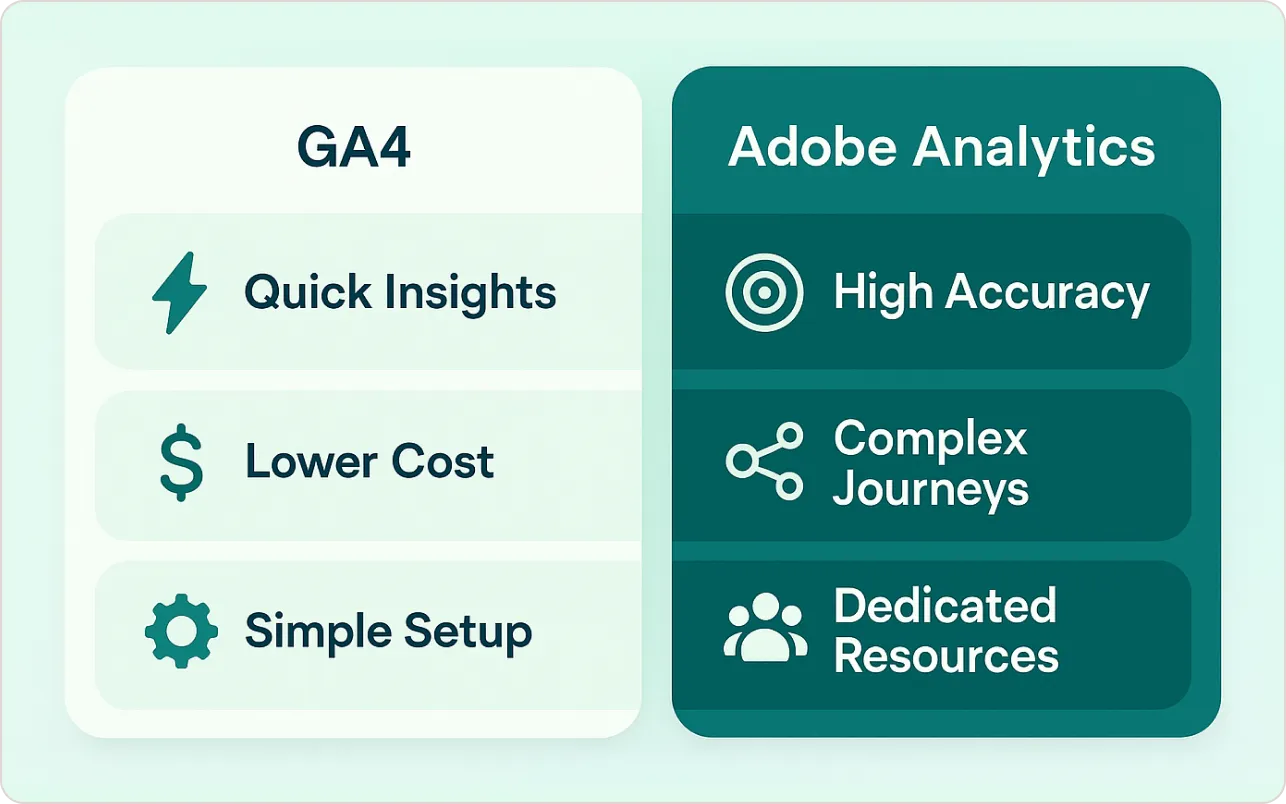Highlight
- Google Analytics 4 is a free analytics tool serving 80% of business needs with machine learning insights and Google ecosystem integration
- Adobe Analytics pricing starts at $100K+ annually, delivering unsampled data and unlimited customization for enterprises
- Implementation timelines differ dramatically, with GA4 taking 1-4 weeks versus Adobe’s 3-6 months deployment
- Mid-market businesses often find GA4 plus specialized tools more cost-effective than a full Adobe implementation
- Data sampling creates accuracy trade-offs as GA4 samples complex queries while Adobe processes 100% of data
- Alternative platforms like Mixpanel and Amplitude excel for specific product analytics and user behavior needs
Last month, I spoke with a growing SaaS company that was struggling with its analytics strategy. They’d outgrown basic GA4 reporting for their complex user journeys, but weren’t sure if Adobe Analytics’ enterprise pricing made sense for their stage.
This conversation happens more often than you’d think. After implementing analytics solutions across 200+ businesses, I’ve seen companies get paralyzed by this choice when they should be focusing on growth. The decision between Adobe’s enterprise platform and Google’s accessible solution isn’t just about features—it’s about matching analytical sophistication to actual business requirements.
The reality is nuanced: Google Analytics 4 effectively serves most organizations at zero cost, while Adobe Analytics delivers value for enterprises requiring advanced customer journey analysis and unsampled data accuracy.
Let me walk you through the real differences, costs, and decision factors based on hands-on experience with both platforms.
Quick Answer:
Google Analytics 4 serves most businesses effectively at zero cost with machine learning insights and Google ecosystem integration. Adobe Analytics justifies its $100K+ investment for enterprises requiring unsampled data, advanced segmentation, and complex customer journey analysis. Your choice depends on data complexity, budget, and technical resources.
The Analytics Reality Check: What Most Businesses Actually Need
Before diving into platform comparisons, let’s establish what most businesses actually use analytics for:
- Traffic source analysis (where visitors come from)
- Conversion tracking (what actions users take)
- Content performance (which pages work)
- Campaign measurement (ROI on marketing spend)
- Basic audience insights (demographics, interests)

According to research by McKinsey, 78% of businesses use analytics primarily for these fundamental insights. The remaining 22% need advanced features like cross-device attribution, offline data integration, or complex customer journey mapping.
This usage pattern explains why W3Techs data shows Google Analytics powering 55.8% of all websites that use traffic analysis tools, while Adobe Analytics serves approximately 0.4% of websites.
Google Analytics 4: The Free Analytics Tool That Actually Works
Google Analytics 4 replaced Universal Analytics in 2023, bringing several improvements that address real business needs:
What GA4 Does Well
Machine Learning Without the Complexity GA4’s automated insights detect traffic anomalies, predict user behavior, and identify conversion opportunities without manual configuration. A client in the SaaS space discovered a 40% increase in trial-to-paid conversions simply by acting on GA4’s automated audience insights—the kind of marketing analytics challenges that traditional tools struggle to solve.
Event-Based Tracking Made Simple Unlike Universal Analytics’ rigid page-view model, GA4 treats every interaction as an event. This flexibility captures user engagement more accurately across websites and mobile apps using the same tracking framework.
Privacy-First by Design With third-party cookies disappearing, GA4 uses Google’s advanced modeling to fill data gaps while respecting user privacy preferences. This approach helps businesses maintain measurement accuracy as privacy regulations tighten.
Google Ecosystem Integration GA4 connects seamlessly with Google Ads for audience sharing, Search Console for organic search insights, and BigQuery for advanced analysis. This integration eliminates data silos common with multi-vendor setups.
GA4’s Real Limitations (From Actual Usage)
Learning Curve Steeper Than Expected Despite being “user-friendly,” GA4’s interface confuses marketers familiar with Universal Analytics. The exploration reports, while powerful, require more technical knowledge than Google advertises.
Data Sampling Still Exists GA4 avoids sampling for standard reports, but complex custom analyses may still sample data. For unsampled analysis, you’ll need to export data to BigQuery—adding technical complexity.
Limited Historical Data GA4 only retains user-level data for 14 months (26 months for GA360). This limitation affects long-term trend analysis and customer lifetime value calculations.
Funnel Analysis Gaps GA4’s funnel reports are less flexible than dedicated analytics platforms. You can’t easily modify funnel steps or analyze drop-off points with the granularity some businesses require.
Adobe Analytics: When Premium Pricing Actually Makes Sense
Adobe Analytics operates on a completely different philosophy. Instead of plug-and-play simplicity, it provides a customizable framework for comprehensive customer analysis.
Adobe’s Genuine Advantages
Zero Data Sampling Adobe processes 100% of your data regardless of volume. For businesses making decisions based on granular segments or rare conversion events, this accuracy proves crucial. A retail client discovered that GA4’s sampling was missing seasonal patterns affecting 8% of their revenue.
Advanced Segmentation Capabilities Adobe’s segment builder handles complex logic that GA4 cannot. Want to analyze “users who viewed Product A, then added Product B within 30 days, excluding those who purchased via mobile”? Adobe handles this natively.
Custom Variable System Adobe’s eVars (conversion variables) and props (traffic variables) allow unlimited customization of data collection. This flexibility enables tracking business-specific metrics that standard analytics platforms cannot accommodate.
Cross-Channel Data Integration Adobe Analytics connects online and offline data through Customer Journey Analytics (additional cost). Banks use this to track customers from web research through branch visits to loan completion.
“Adobe’s forward-looking vision extends beyond analytics, aiming at providing the levers to enable enterprise-wide, cross-channel personalization with data, content, and journeys.” – Forrester Wave™: Digital Analytics Solutions, Q3 2025
The Hidden Costs of Adobe Analytics
Implementation Complexity Every Adobe Analytics deployment requires extensive planning. You’ll configure custom variables, define success events, and build reporting structures from scratch. Based on our implementations, expect 3-6 months for full deployment versus GA4’s same-day setup.
Ongoing Expertise Requirements Adobe Analytics demands dedicated analysts who understand its data model and terminology. The learning curve isn’t steep—it’s a cliff. Plan for ongoing training costs and potential consultant retainers.
Vendor Lock-in Considerations Migrating away from Adobe Analytics is challenging due to its custom implementation. Your historical data and reporting structures don’t easily transfer to other platforms.
Adobe Analytics Pricing: The Real Numbers
Understanding Adobe Analytics pricing is crucial when making the Adobe Analytics vs Google Analytics decision. Adobe doesn’t publish standard pricing, but here’s what we’ve observed across client implementations:
Small Enterprise: $100,000-$200,000 annually
- Basic Analytics with standard variables
- Limited monthly server calls
- Standard reporting interface
Mid-Market: $200,000-$400,000 annually
- Advanced attribution modeling
- Customer Journey Analytics add-on
- Increased server call allowances
Large Enterprise: $400,000+ annually
- Unlimited data processing
- Real-time personalization capabilities
- Advanced audience management
Implementation costs: Add 40-60% of annual licensing for first-year professional services, training, and custom development.
Compare this Adobe Analytics pricing structure to Google Analytics 4’s free analytics tool model or Google Analytics 360’s $150,000 annual cost, and the investment gap becomes clear in any Adobe Analytics vs Google Analytics evaluation.
Implementation Reality: What Actually Happens

GA4 Implementation Timeline:
- Basic setup: 1-3 days
- Ecommerce tracking: 1-2 weeks
- Custom events and goals: 2-4 weeks
- Advanced attribution: 4-6 weeks
Adobe Analytics Implementation Timeline:
- Requirements gathering: 2-4 weeks
- Technical implementation: 6-12 weeks
- Custom reporting development: 4-8 weeks
- Team training and optimization: 4-6 weeks
These timelines reflect real client experiences. Adobe’s power comes with proportional complexity that many businesses underestimate. Proper data cleaning automation becomes essential regardless of which platform you choose.
Quick comparison of Google Analytics and Adobe Analytics, covering ease of use, customization, pricing, and benefits. It recommends Google Analytics for small businesses and Adobe Analytics for enterprises with complex data needs.
Google Analytics Premium Cost vs Adobe: The Real ROI Comparison
When comparing Google Analytics premium cost against Adobe Analytics pricing, the numbers tell a clear story. Google Analytics 360 (the premium version) costs approximately $150,000 annually—still significantly less than Adobe’s entry point.
The Google Analytics premium cost includes:
- Unsampled reporting
- Advanced attribution modeling
- Higher data limits
- BigQuery integration
- Enhanced support
For most enterprises, GA360 bridges the gap between the free analytics tool (GA4) and Adobe Analytics’ complexity. It delivers enterprise features without Adobe’s implementation overhead.
The ROI calculation for Adobe Analytics vs Google Analytics premium becomes simple: if you need unsampled data and advanced attribution but don’t require Adobe’s unlimited customization, the Google Analytics premium cost offers superior value.
The key is transforming your analytics data into clear, actionable insights through effective data visualization consulting services that make complex information immediately accessible to decision-makers.
The choice between these platforms ultimately depends on matching analytical sophistication to business requirements and available resources.
Start with GA4 if you need immediate insights, have budget constraints, or lack dedicated analytics expertise. The platform handles most business requirements effectively while providing room for growth.
Choose Adobe Analytics when data accuracy is critical, customer journeys are complex, and you have the resources to leverage its full capabilities.
Consider the total cost of ownership including implementation, training, and ongoing optimization—not just licensing fees.
The smart approach: begin with GA4 to establish data-driven decision making, then evaluate Adobe when your analytics sophistication reaches enterprise levels. Most businesses discover that GA4’s capabilities grow with their needs, making the expensive upgrade unnecessary.
Consider Adobe Analytics If:
You Have Complex, Multi-Channel Customer Journeys Airlines, banks, and retailers with intricate omnichannel experiences benefit from Adobe’s comprehensive tracking capabilities. This is where business intelligence consulting becomes crucial for implementation success.
Data Accuracy Trumps Cost Concerns If sampling errors could affect million-dollar decisions, Adobe’s unsampled data processing justifies its cost.
You’re Already in Adobe’s Ecosystem If you’re using Adobe’s CMS, marketing automation, or personalization tools, Analytics completes the integrated suite.
Don’t let poor implementation waste months of potential insights. Our Google Analytics Services have helped 200+ businesses unlock the full power of their analytics platforms with measurable results typically visible within the first month.
Conclusion: Making Your Analytics Platform Decision
Choosing between Adobe Analytics and Google Analytics doesn’t have to be overwhelming when you focus on matching platform capabilities to your actual business needs.
Key takeaways from this analysis:
Google Analytics 4 is the right choice for most businesses seeking cost-effective analytics with strong Google ecosystem integration. Its free tier handles standard web analytics, campaign tracking, and audience insights effectively. Even GA360 at $150,000 annually delivers enterprise features at a fraction of Adobe’s cost.
Adobe Analytics justifies its investment when your organization requires unsampled data accuracy, complex customer journey analysis, and unlimited customization capabilities. The $100K+ annual commitment makes sense for enterprises where data precision directly impacts million-dollar decisions.
Mid-market businesses ($10M-$100M revenue) should carefully evaluate whether GA4 plus specialized tools meet their needs before committing to Adobe’s complexity and cost. Often, a hybrid approach proves more practical during growth phases.
Consider alternative platforms like Mixpanel, Amplitude, or Heap if your primary need is product analytics or user behavior tracking rather than comprehensive web analytics.
The most common mistake is choosing based on feature lists rather than actual requirements. Start with your business objectives, evaluate your team’s technical capabilities, and honestly assess your budget for implementation and ongoing management.















